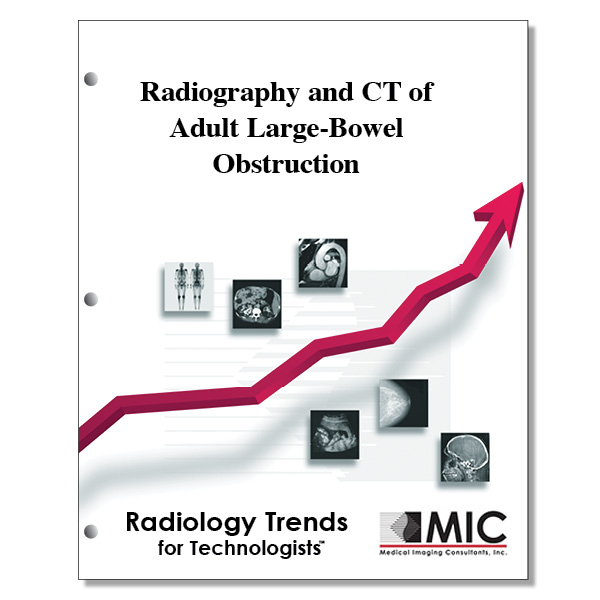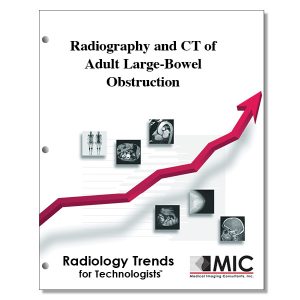

Radiography and CT of Adult Large-Bowel Obstruction
A review of the imaging findings in multiple causes of large bowel obstruction and a comparison with acute colonic pseudo-obstruction.
Course ID: Q00469 Category: Radiology Trends for Technologists Modalities: CT, Radiography2.0 |
Satisfaction Guarantee |
$24.00
- Targeted CE
- Outline
- Objectives
Targeted CE per ARRT’s Discipline, Category, and Subcategory classification for enrollments starting after January 28, 2025:
[Note: Discipline-specific Targeted CE credits may be less than the total Category A credits approved for this course.]
Computed Tomography: 1.50
Procedures: 1.50
Abdomen and Pelvis: 1.50
Radiography: 0.50
Procedures: 0.50
Thorax and Abdomen Procedures: 0.50
Registered Radiologist Assistant: 2.00
Procedures: 2.00
Abdominal Section: 2.00
Outline
- Introduction
- Clinical Findings and Pathophysology
- Abdominal Radiography Technique
- Merits of Abdominal Radiography
- Challenges of Abdominal Radiography in Patients with LBO
- Multidetector CT
- CT Technique
- Pitfalls of CT Imaging of LBO
- The Contrast Enema
- LBO: Major Causes
- Colon Carcinoma
- Volvulus
- Sigmoid Volvulus
- Cecal Volvulus
- Transverse Colon Volvulus
- Diverticulitis
- Adult Intussusception
- Intraluminal Contents Causing LBO
- Hernias
- Inflammatory Bowel Disease
- Adhesions
- External Compression
- ACPO or Ogilvie Syndrome: An Important Mimic of LBO
Objectives
Upon completion of this course, students will:
- describe the anatomy and function of the colon
- understand the symptoms of LBO
- describe both common and less common causes of LBO
- know the frequency of LBO compared to SBO
- describe the key topographic anatomical landmarks of the abdomen
- know the main anatomical sites in the colon where LBO occurs
- describe a volvulus and where they occur
- understand how abdominal sounds relate to LBO
- describe the quadrants that make up the abdominal cavity
- describe the radiographic projections used in an abdominal radiographic series
- know which radiographic views are able to show air/fluid levels in the abdomen
- understand the sensitivity of abdominal radiography in diagnosing LBO
- describe pneumatosis intestinalis and the associated CT findings
- describe ACPO and its alternative names
- understand the role CT plays in diagnosing LBO
- understand the role a contrast enema plays in diagnosing LBO
- know the relationship between colon malignancy and LBO
- know the various radiographic signs related to a sigmoid volvulus
- describe a cecal volvulus
- know the abdominal radiography, CT and contrast enema findings of a cecal volvulus
- describe the CT findings of ischemia associated with cecal volvulus
- describe a volvulus of the transverse colon and its findings on a contrast enema
- know the relationship between diverticulitis and LBO
- know how diverticulitis is characterized with CT
- describe adult intussusception and its relationship to LBO
- know the classic appearance of adult intussusception on a contrast enema
- know how intraluminal contents relate to LBO
- know the various types of internal hernias and their relationships to LBO
- describe the relationship between Crohn disease and LBO
- understand how adhesions and external compression from masses relate to LBO
